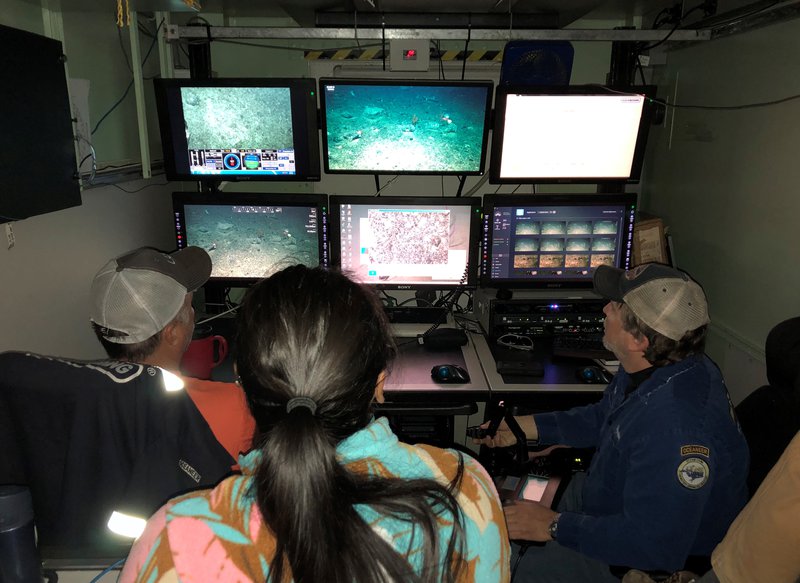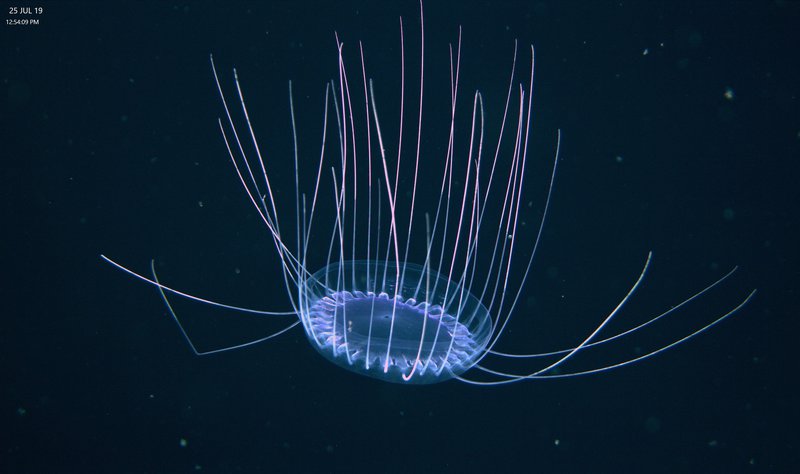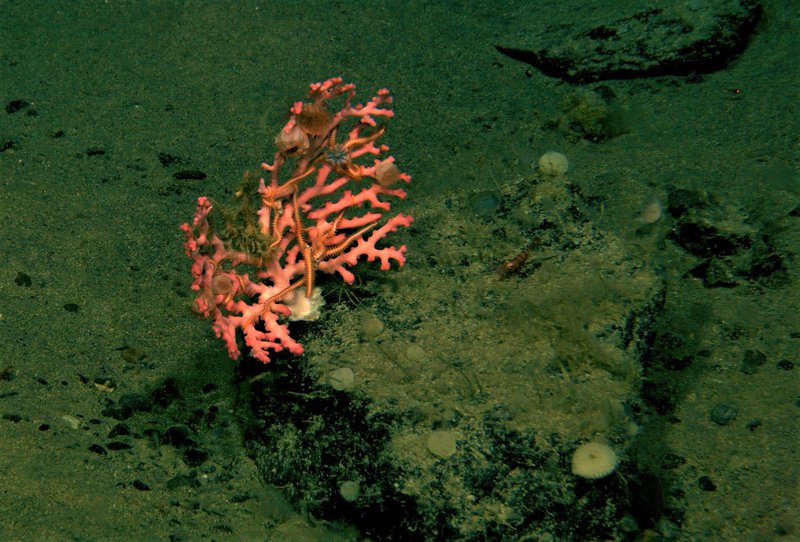
By Katrin Iken, Professor in Marine Biology - University of Alaska Fairbanks
August 4, 2019
Wait… the vehicle is settled… extend the arm… suction is on… slowly now… here he goes… HE IS IN!!! Familiar words for those who have spent many hours in the remotely operated vehicle (ROV) command van on the back deck of R/V Sikuliaq while the ROV Global Explorer is under water, doing its thing.
We are on our last dive of this cruise to explore some of the Gulf of Alaska seamounts and we have just collected another of the amazing critters on the Giacomini seamount using the suction sampler of the ROV. We are so excited about this opportunity to not only collect but to see how these amazing organisms are actually situated and live above and on the tops and the deep sides of the seamounts.

Inside the ROV control van, pilots and scientists alike are fascinated by the underwater world to be discovered. Image courtesy of Katrin Iken, University of Alaska Fairbanks. Download larger version (jpg, 3.5 MB).
If you look through some of the previous mission logs, you will have seen some of the incredible critters we have found. Several of the jellies are most likely new species that we hope to describe with the help of the extremely high-resolution video, still pictures, 3D images, and laser scanning technology that the Global Explorer has, in addition to the actual samples collected. On the seafloor we found sites with some different fishes that are rare or not recorded for the region. We have seen an increased abundance of corals on the top of the seamounts and the habitat they provide to other species was obvious. For example, the pink coral that had some zoanthids, resembling small sea anemones, attached where they prey on the coral tissue to make room for themselves to attach to the underlying coral skeleton. Next to them were brittle stars curled around the coral branches to reach higher grounds at which they can filter-feed small particles from the water column. Another part of the coral was overgrown by some hydroids, microscopically small polyps that also use the coral to “climb up a floor” to reach particles in the water column. On the rock surrounding the coral were several sponges, smaller corals, and shrimp. Just this one little spot was teeming with so much life and much of it because of the coral providing habitat to other organisms. That makes these seamounts so important for the ecosystem and why they are protected from potentially destructive bottom fishing.

This fragile beauty is called Solmissus and never ceased to surprise with its simple beauty. Image courtesy of NOAA/UAF/Global Explorer Oceaneering. Download larger version (jpg, 3.7 MB).
We have done 11 ROV dives this cruise, most of them about 12 hours in length; have taken countless zooplankton nets; performed bottom trawls and box corers where we could; profiled the water column for physical and chemical parameters at every station; and observed birds along the way. We are exhilarated about what we have accomplished, but at the same time also sad that we were only able to explore a tiny fraction of these fascinating seamounts. There is so much more still to explore, and I guess we just have to hope that we will have a chance soon to come back.
Now it is time for us to pack up all the gear; prepare the ROV Global Explorer for its long transport home; and for all of us to leave the amazing facilities, crew, and food of the R/V Sikuliaq behind until we can come back for our next adventure!

The deep-sea corals found on the seamounts are not only astounding themselves but also provide habitat for a large number of other organisms. Image courtesy of NOAA/UAF/Global Explorer Oceaneering. Download larger version (jpg, 4.6 MB).